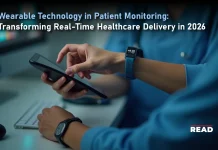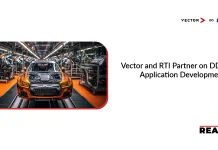In the ever-evolving landscape of modern industry operational technology has emerged as a critical component driving innovation, efficiency, and competitiveness.
According to Extrapolate, the global operational technology market revenue is set to hit USD 232.30 billion by 2030. This statistic indicates the growth potential of the market. Without delay, let’s delve into the transformative influence of operational technology unveiling their significance, differences, and their role in shaping the future.
What is Operational Technology?
Operational technology (OT) refers to the utilization of hardware and software to manage industrial machinery, with a primary focus on interfacing with the physical realm. OT encompasses ICSs (industrial control systems) like DCSs (distributed control systems), PLCs (programmable logic controllers), and SCADA (supervisory control and data acquisition) systems.
OT ecosystems oversee tangible processes, including those in manufacturing, energy, healthcare, facility management, and various other sectors.
What is the Role of Operational Technology in Manufacturing?
Operational technology plays a pivotal role in modern manufacturing. It facilitates real-time monitoring and control of production processes, optimizing efficiency, reducing downtime, and enhancing product quality. Key components of OT in manufacturing include:
- Sensors and Actuators: These devices collect data on various parameters, such as temperature, pressure, and humidity, to ensure precise control of manufacturing processes.
- PLCs: These are at the heart of OT in industrial settings, managing and controlling machinery and equipment.
- SCADA Systems: Supervisory control and data acquisition systems offer centralized monitoring and control, providing a holistic view of the manufacturing process.
- Industrial Internet of Things (IIoT): IIoT leverages sensors and connectivity to gather and analyze data, enabling predictive maintenance and process optimization.
What are the Benefits of Operational Technology?
Let’s break down the key benefits in a simpler way:
- Boosted Efficiency: OT convergence allows real-time data sharing making operations work better. It means businesses can automate tasks, manage resources smarter, and make quick decisions based on real-time.
- Clearer Oversight and Control: Combining information technology (IT) and OT gives a complete view of both the digital and physical aspects of operations. This helps organizations monitor and manage their work, find and fix problems, and react fast to changes or issues.
- More Productivity: With OT convergence, routine tasks get automated, making employees more productive. It also lets organizations use data analytics, machine learning, and artificial intelligence to work smarter, predict when things need maintenance, and get more done.
- Informed Choices: The mix of IT and OT systems creates a wealth of data. This data can be studied to find valuable insights, which helps in making smart decisions.
- Better Safety and Security: OT convergence keeps a close watch on crucial infrastructure and industrial processes, making safety and security better. It helps organizations build strong cybersecurity defenses, catch and avert threats right away, and keep the systems running safely and smoothly.
- Savings: OT convergence can cut costs by using resources more efficiently, avoiding downtime with smart maintenance, and reducing the need for manual work. It also saves money by not having to keep separate IT and OT setups, which lowers maintenance and running expenses.
Remember, while OT convergence brings lots of benefits, it also comes with challenges, especially when it comes to security and needing skilled people who understand both IT and OT. Organizations should plan and put OT convergence into action carefully to make the most of the good parts while managing any potential risks and keeping their systems safe and sound.
OT Security: Protecting Physical and Digital Operations
Traditionally, OT security focused on the safety of physical machines, while IT security protected data. Today, integrating OT and IT networks improves efficiency but introduces cyber threats. Devices now connect to IT networks, offering benefits like remote access but also vulnerabilities.
To counter these risks, a comprehensive cybersecurity approach is essential. Critical infrastructure employing OT should adopt sensible security strategies to minimize the risk of cyberattacks, including malware and other vulnerabilities.
A layered, defense-in-depth approach is the key. This strategy deploys multiple security measures across various layers in your environment, including container platforms, operating systems, automation tools like software as a service (SaaS) assets, Kubernetes, and cloud services. This secures early detection and automated response to both simple computer threats and more complex ones like ransomware.
Winding Up
As the integration of information technology with operational technology systems gains momentum, the potential for enhanced efficiency, improved data analytics, and robust cybersecurity in industrial operations becomes increasingly promising. Embracing these technological advancements is essential for organizations looking to remain competitive and adaptable in the ever-changing world of industrial technology.
Browse More Posts:-
Airtight Tapes Market
AFCC Debt Settlement Market
Digital Printing Wallpaper Market
String Lights Market




